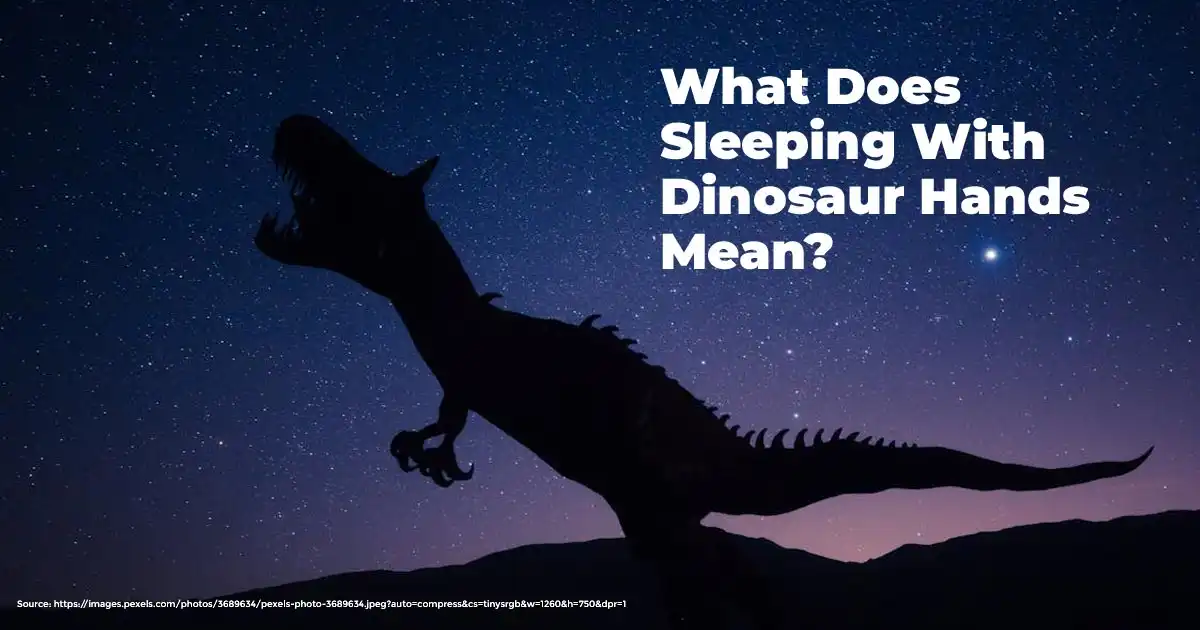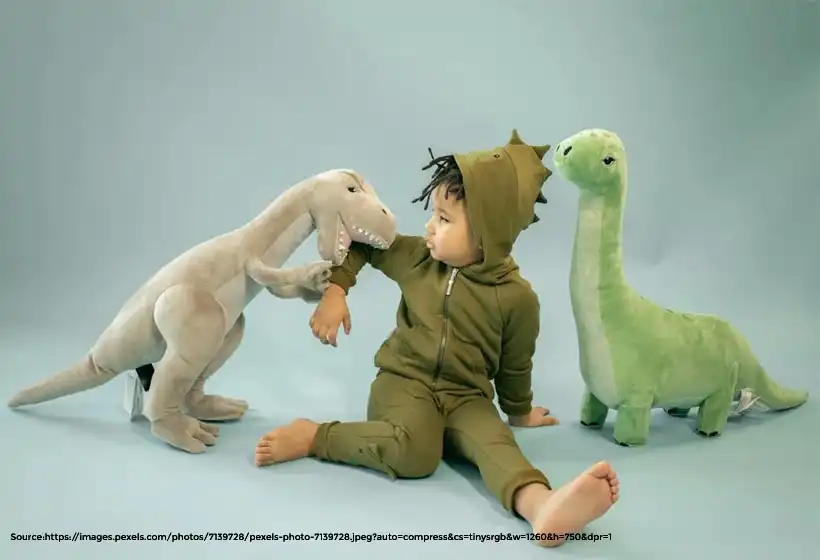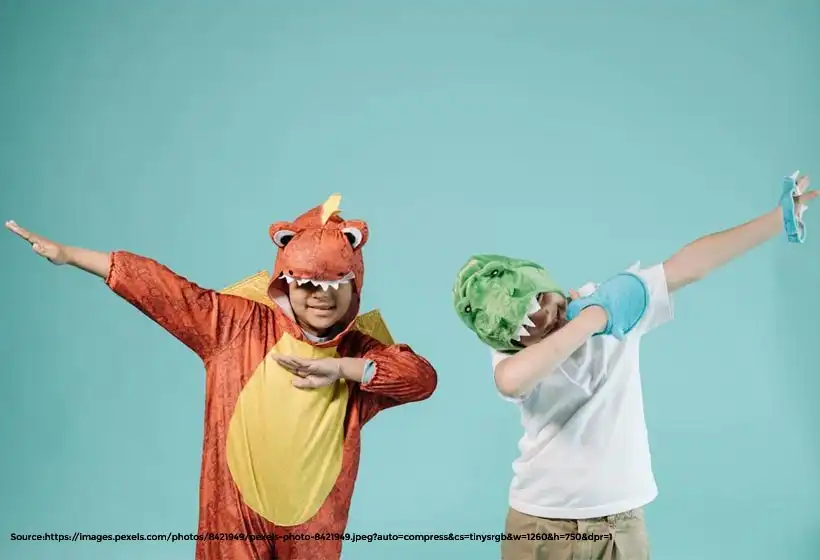Dinosaur Hands Sleeping Position: All You Need To Know

Dinosaur hands! Sounds a little ‘out-of-the-ordinary’?
Well, if you came here to inquire if you sleep in this sleeping position or straight out of curiosity you are in the right place.
I’ve been intrigued by this sleeping style going viral on TikTok and YouTube since April 2024, and I’ve completed detailed research on the sleeping position. So, in this informative article, I’m about to spill the beans about it—I mean every bean there is.
Here, I’ll dissect every single aspect of this viral sleeping position so you can find answers to all your burning questions.
How is it related to ADHD or Autism? What is its demographic data of occurrence? Do you sleep with Dinosaur hands, too (maybe unwittingly)? Are there any risks associated? Or, does it have possible benefits, if any? Stay tuned.
What Does Sleeping With Dinosaur Hands Mean?
“Sleeping with dinosaur hands” can be a fun way to describe a sleeping position where your arms are tucked close to your body, similar to how a T-Rex’s arms look. While the arms are tucked closer to the body, your hands and fingers may extend outwards.
This term often used humorously, can also be used in a nuanced way when talking about ‘neurodiversity,’ especially autism.
Viral TikTok’s T-Rex Arms & Neurodiversity
In the context of neurodiversity, “dinosaur hands” or “T-Rex arms” refer to certain hand positions and arm movements that are common when autistic individuals sleep.
This sleeping position is primarily focused on achieving greater comfort, as in the case of autistic individuals. Some may sleep by keeping their arms close to their body while sleeping, making small and precise movements with their hands, or others may have a unique way of handling objects.
These actions are not random; they are often related to how an individual may process sensory information. In the end it makes them feel comfortable and sleep snug.
TikTok’s latest trend is all about ‘sleep and dinosaur hands’. Since April 2024, I’ve been witnessing this trend circling social media. I’ve seen YouTube shorts of people sleeping with their arms tucked in close, like a T-Rex’s short arms. While it may appear intriguing to some in reality, it’s not simply a funny pose. For some it is a way to express comfort and feel relaxed while they sleep.
Now if we are centered on autistic individuals, it’s familiar with the fact that for them ‘comfort is especially important’. So, it can be pretty common for them sleep with their arms close to their body for warmth all night; giving off that ‘dinosaur arm’ vibe.
To sum things up, ‘dinosaur hands’ can be considered as a natural sleeping position for many, just so it keeps you feeling warm and cozy. There is nothing worrisome about it. It’s just about finding what feels best for you when you rest after a hard day’s work.
Demographic Data – How Common Is It?
I’ll start with some insights and observational studies.
1. Fact #1: Neurodiversity and Sleep Preferences
Research studies state that almost 15-20% of the population worldwide show signs of neurodivergence in some form or the other.
Additional studies and anecdotal evidence suggest that individuals within the neurodivergent community may display diverse sleep preferences. They have specific sleep patterns too because of their neurological differences and unique sensory processing.
2. Fact #2: Comfort and Sleeping Positions
It’s commonly observed in people, regardless of neurodiversity, to adopt specific sleeping positions. This is driven by their comfort desire and is based on their needs. Some may sleep in positions like “dinosaur hands,” as it can provide a sense of security and relaxation for them.
3. Fact #3: Individual Variability
Let’s talk about individual preferences. It’s important to note that sleep preferences vary widely among individuals. What can works comfortably for me may not be the same for you or another person.
We should highlight our individual need and opt for personalized approaches in order to sleep as comfortable as we can.
Because Matthew Walker (author of ‘Why We Sleep’) once opined:
“Sleep acts as a bridge between hope and despair.”
So, a good night’s sleep, whatsoever the sleeping position, can help you recover from despair and bring in hope to your life.
In the later sections, we will detail into another interesting fact – How sleep position is related autism and ADHD.
Why Do Some People With ADHD Sleep With Dinosaur Hands?

Attention Deficit Hyperactivity Disorder (ADHD) affects approx. 8.7 million U.S. adults.
How are these individuals different?
Now, they showcase differences in their activities due to neurological differences or changes in brain development. This causes the children to be highly active and they often face problems if asked to sit still, stay in attention or show focus and self-control. So, it’s not difficult to assume that they face difficulties in various aspects of life – in school, home, and even in their social circles.
Dinosaur Hands, Sleeping & ADHD
Sleep is crucial for everyone, but it holds particular significance for neurodivergent individuals due to their often heightened sensory experiences and frequently activated nervous systems.
When discussing sleeping positions like “dinosaur hands,” for conditions such as ADHD, it’s essential we understand the relationship between comfort and sensory processing.
Fact: Children/adults with ADHD challenges may seek deeper ‘proprioceptive input’.
This term refers to the body’s awareness of its position and movement.
Doctors opine that some people with ADHD crave deeper proprioceptive input.
This can explain their sleep comfort associated with T-Rex arms, fidgeting, or even how some find comfort in weighted blankets or in closed spaces.
Taking it forward, ‘dinosaur hands’ depicted by bent wrists fingers facing inward and bent elbows hugging the body with fingers curled up like dinosaur claws, can deliver a sense of comfort and security to people with ADHD.
We need to remember that these terms – ‘ADHD sleeping positions’ ‘dinosaur hands’ are unofficial and used primarily in social media.
But in reality, it goes beyond sleep trends and viral TikTok videos. It highlights an intriguing aspect of how neurodivergent individuals need to adapt their sleeping positions for their sensory comfort and needs.
Is Sleeping On Left Side With Dinosaur Hands For ADHD Comfortable?
I am about to throw some light in the matter.
The concept of deeper proprioceptive input, mentioned earlier, can play a role here. Sleeping on the left side can provide a certain level of pressure and support that some individuals find soothing and calming.
This pressure can be similar to the comfort provided by weighted blankets, which are known to benefit some individuals with ADHD or sensory issues.
Sleeping w/t Dinosaur Hands & Autism
Autistic Spectrum Disorders – Disorder
If you call dinosaur hands a phenomenon then let me remind you that it has its roots in the unique neurological and sensory receptions of autistic individuals. They usually have distinct sensory processing patterns. This is what makes certain textures, movements, or positions more comfortable to them.
The ‘T-Rex sleeping position’ is one such position.
Holding their arms in a T-Rex-like position during sleep offers a sense of security to autistic people. This posture is also a form of stimming (self-stimulatory behavior). These behaviors are common in autistic individuals to self-regulate their emotions.
While this sleeping position is not exclusive to autistic individuals, it can be prevalent among them. It may naturally result from seeking a cozy, enclosed feeling while sleeping.
Understanding the ‘What’ Behind Autistic Hand Gestures
Autistic hand gestures comprise of a range of hand and finger movements or changing positions of the hands such as flapping, twisting, or flicking their fingers.
What do these hand gestures signify?
These gestures signal as non-verbal communication methods. They aid autistic individuals in expressing themselves in a holistic manner. Through these gestures they find it easy to convey their emotions, manage their sensory responses, or find comfort.
Respecting Autistic Behavior
Understanding and respecting autistic behaviors, including T-Rex arms and specific hand gestures, is crucial for fostering an inclusive and supportive environment. These behaviors are not mere quirks but integral expressions of how autistic individuals interact with their surroundings. They serve as forms of communication, conveying emotions, needs, and comfort levels.
Supporting individuals with autistic T-Rex arms involves creating safe environments where they feel comfortable, respecting their personal space and natural behaviors, incorporating understanding and accommodations in educational settings, and encouraging self-expression in ways that suit their comfort and preferences.
By embracing and accommodating these behaviors, we can enhance interactions and relationships with autistic individuals and promote a more inclusive society.
‘Sleeping With T-Rex Hands’ – Is It Harmful?
‘Dinosaur hands’ sleeping position is generally not harmful.
As discussed in the above sections, it can offer comfort and security for many during sleep.
However, like any sleeping position, it’s essential to ensure that it doesn’t cause discomfort or restricted blood flow.
If you find it comfortable and it doesn’t lead to any physical issues, snoring or breathlessness there’s typically no harm in sleeping with dinosaur hands.
Dinosaur Hands While Sleeping – Benefits

As crazy as it may sound, sleeping with dinosaur hands does offer certain benefits.
- Comfort and Security
For many individuals, sleeping with their arms tucked close to their bodies, resembling dinosaur hands, can provide a sense of comfort and security. This position may create a feeling of ‘being cocooned’ or hugged, which can promote relaxation and deeper sleep.
- Reduced Tossing and Turning
Adopting a sleeping position like “Dinosaur Hands” may help reduce tossing and turning during the night. By keeping the arms close to the body, there is less likelihood of limbs moving around excessively, leading to a more stable and restful sleep.
- Improved Spinal Alignment
Sleeping with the arms in a bent position close to the body can contribute to better spinal alignment. This alignment is essential for reducing pressure on the spine and supporting overall back health during sleep.
- Enhanced Breathability
Some individuals find that sleeping with their arms tucked in allows for better breathability, especially if they tend to sleep with their hands near their face. This can reduce the likelihood of breathing obstructions or discomfort during sleep.
- Relief for Joint Pain
For individuals with joint pain or discomfort, the “dinosaur hands” position can be beneficial. By keeping the arms in a supported and less extended position, pressure on joints like the shoulders and elbows may be reduced, leading to decreased pain and stiffness.
- Sensory Regulation
In neurodivergent individuals, such as those with autism or sensory processing challenges, the “dinosaur hands” position can contribute to sensory regulation. The feeling of pressure and containment from this position may help individuals manage sensory input and promote a sense of calmness.
- Promotes Relaxation
Overall, “dinosaur hands” sleeping position promotes relaxation and a sense of ease for many individuals. This can lead to improved sleep quality, reduced nighttime awakenings, and a refreshed feeling upon waking.
It’s important to note that the benefits of any sleeping position can vary from person to person based on individual preferences, comfort levels, and specific health considerations.
Instead of worrying if sleeping dinosaur hands can cause discomfort or body aches, prioritize on how comfortable your bedding is. You need a balance of plushness and support from your to sleep uninterrupted.
Choose the Right Mattress
Need help choosing a mattress that’s suitable for your child and you? We’ve some resources at our fingertips to help you make a wise decision.
Let’s dive into some key points to consider:
I. Mattress Type
- Memory Foam: Provides excellent pressure relief and conforms to your body shape.
- Innerspring: Offers good support and breathability.
- Hybrid: Combines memory foam and innerspring for the best of both worlds.
- Latex: Natural material with durability and responsiveness.
II. Firmness Level
- Soft: Ideal for side sleepers and lightweight individuals.
- Medium: Suitable for most sleepers.
- Firm: Best for back and stomach sleepers.
III. Size
- Twin: Single sleeper or kids.
- Full/Double: Good for solo sleepers with more space.
- Queen: Popular choice for couples.
- King: Spacious for couples or those who like extra room.
IV. Memory Foam Density
- Low Density: Softer feel, better for lightweight sleepers.
- Medium Density: Balanced comfort and support.
- High Density: Firm support, ideal for heavier individuals.
If you are short in time, head over to our ‘Mattress Buying Guide’ or ‘Best Time to Buy a Mattress‘ for information on everything – mattress type, density, firmness, body type and sleeping position.
You can start browsing our collection of Memorial Day 2024 Sales to find the mattress that’s ideal for you!
Smart-Take!
In the closing chapter, I’d like to draw your attention to a common fact i.e. autism or ADHD is closely related to sleeping with dinosaur hands or curled in fingers. We need to understand the ‘why’ and ‘how’ behind autism (as mentioned above) and respect the succinct requirements of every individual.
As interesting as the phenomenon is, it’s pretty clear that ‘comfort’ and a feeling of ‘security’ are the driving factors behind this sleep position.
The sleeping position is commonly seen not only in ADHD children or autistic individuals, but it is common in many who prefer to snug and sleep. So, there’s nothing to worry about it. As long as you don’t sprain your muscle, get a sore in the morning, suffer from breathlessness or snoring, sleep in any position you like. Comfort is the key here, to rinse away all the stress of a busy working day.
Sleep well, and like Matthew Walker said “Get building a strong bridge between despair and hope”.
Frequently Asked Questions
- What does it mean sleeping with dinosaur hands?
This term refers to a sleeping posture where people bend their wrists inward toward their bodies, curling their hands into a shape similar to a dinosaur’s claws. Some videos suggest that this posture may be associated with neurodivergence.
- Why do I hold my hands like a T-Rex?
Holding the arms in a T-Rex-like position can offer a feeling of security and aid in coping with sensory overload. It’s a type of stimming, a common self-regulatory behavior seen in autistic individuals to manage emotions and sensory input.
- Why do my wrists curl when I sleep?
Inflammation in the wrist or tendons can compress the median nerve. Initial symptoms often appear during sleep when we naturally flex our wrists, causing our hands to curl.
- Do sleeping positions matter?
For younger, healthy individuals, sleep position holds less significance, according to Salas. However, as one ages and encounters more health concerns, sleep position can either have beneficial or adverse effects.
- Why do people with ADHD sleep with T-Rex arms?
Some individuals, especially those with ADHD or sensory processing difficulties, may have a strong desire for deep proprioceptive input. This could account for behaviors like T-Rex arms, fidgeting, or the comfort some find in weighted blankets or enclosed spaces.
Disclaimer
The information discussed in this article is intended for general information only and should not be replaced as professional advice. It does not intend to diagnose, treat, or cure your sleep or mental health conditions. Before any adjustments to your sleep health routine, consult a qualified healthcare professional.








